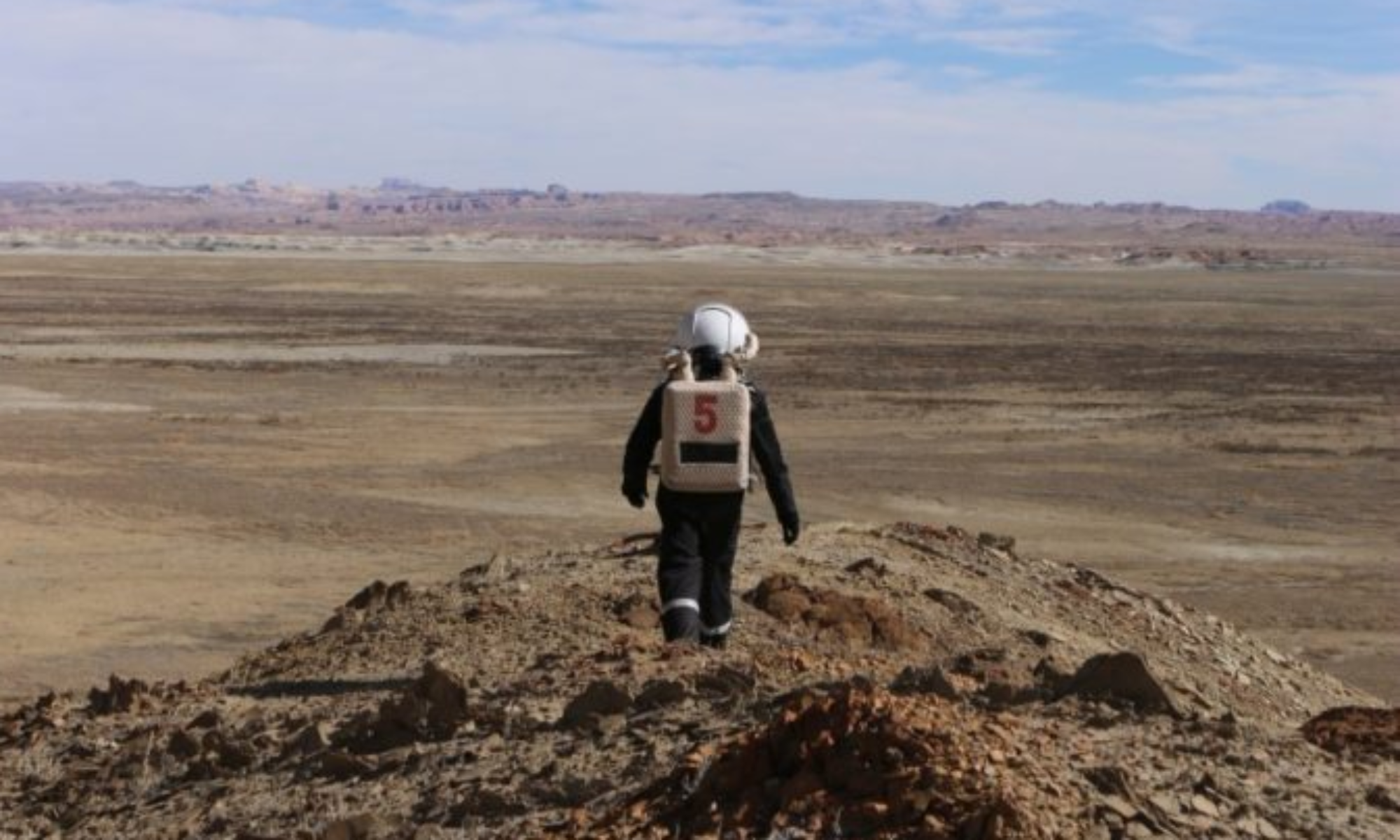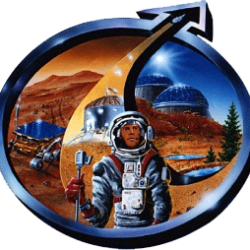Today was filled with putting our scouting, navigation and tracking equipment, and experimental procedures that we generated over the course of the week to work. We conducted a total of three EVAs using both maps and a handheld Garmin tracker device, which functioned as both an ammonia and rare mineral detector within the sim. These three EVAs dictated constant crew personnel resources, and we had Mission Support be a pilot participant in our navigation tasks for added assistance and task naivety. Following a long day piloting our tasks at Cowboy Corner, Pooh’s Corner, and Kissing Camel, we began scripting our data analysis in python during dinner, which consisted of frozen pizzas.Following dinner, we prepared our equipment, personal items, and the habitat for an early morning departure.
Photo Report – January 22 2025
Photo Report – January 21 2025
See attached photos from Jan 21 2025
Journalist Report – January 21th
Today we spent a lot of time covering various logistics: what’s a day in the life of an MDRS sim, what will our experiment operations look like as researchers and participants, and things like where will we stay. We also tested some new sensors in the transitions between indoors and outdoors. We found what we expected for our eye tracking glasses – facing the sun is a bad idea. Our second crew arrived today so we helped them unpack and get them trained. They’ll be our participants for our experiment tomorrow. As part of their initiation, we had them cook dinner using a recipe from the MDRS cookbook and pantry ingredients. They chose wisely and made a great chicken fried rice. Following that we had brownies, discussed our Hogwarts houses, and did some more planning.
Crew Photos January 20th
Journalist Report – January 20th
Scouting (Day 1)
We spent the day scouting out the EVA sites we’d like to use for our experiments. We decided on 8 sites north and south of the habitat. The weather was warmer than expected (a brisk 20ish degrees F) but the wind while driving was pretty rough. We tested some technology today as well. For example, we need really precise GPS tracker and found great success using a Garmin dog tracking collar! We also put together a little remote control rover to try out tomorrow. Fingers crossed its all terrain as advertised! We had a great meal of tortellini, chicken sausage, broccoli and carrots and a great convo about board games with Mission Support to close out the night.
Best,
Aaron
Supplemental Operations Report -January 19th
Date: 1/19/2025
Name of person filing report: David Steinhour
Reason for Report: Routine
Non-Nominal Systems: Power system battery, Hab toilet overflow alarm, UV filter for water system.
Power system: "Solar: The battery bank does not hold charge when the sun is down and low on the horizon. Main generator has been monitored for oil leaks; minor leaks observed.
Main generator:
1) Oil, oil filter changed on 1/16/2025.
2) Current hours – 8003.1"
Propane Readings: "Refilled 1/12
Station Tank: 73%
Director Tank: 80%
Intern Tank: 81%
Generator Tank: 65%"
Water: "Hab Static Tank – 550 gallons
GreenHab – 200 gallons
Outpost tank – 450 gallons"
Rovers: "Sojourner rover used: Yes
Hours: 208.4
Beginning Charge: 100 %
Ending Charge: 100 %
Currently Charging: Yes
Notes on Rovers: Curiosity left rear tire reinstalled. It is holding air well."
Cars: "Crew car taken to Brian auto for service on 1/14. Oil changed, air filter replaced. Other issues identified: sway bar end links are bad, drivers side front ball joint is bad, oil pressure is low. Hab Car used and why, where: To Hanksville for supplies.
"
Summary of Internet: Nominal
EVA suits and radios: "Suits: All nominal.
Comms: All nominal."
Campus wide inspection, if action taken, what and why: Nominal
Summary of Hab Operations: "Toilet overflow alarm battery has been replaced. Monitoring to confirm the issue is fixed.
UV water filter lamp failed and was unplugged. New UV lamp ordered."
Summary of GreenHab Operations: Nominal
Summary of SciDome Operations: Nominal
Summary of Observatories Operations: Nominal
Summary of RAM Operations: Nominal
Summary of Outpost Operations: Nominal
Summary of Health and Safety Issues: Nominal
GreenHab Report – February 3rd
Crew 310 GreenHab Report 3-02-2025
GreenHab Officer: Dr Marina Martínez
Environmental control (fan & heater): Heater 24h
Average temperatures (last 24h): 83.4 ºF
Maximum temperature (last 24h): 94.8 ºF
Minimum temperature (last 24h): 72 ºF
Hours of supplemental light: 2 hours
Daily water usage for crops: 9 gallons total
Daily water usage for research and/or other purposes: 75 ml
Water in Blue Tank (200 gallon capacity): __184_ gallons
Time(s) of watering for crops: 10 am, 7pm
Changes to crops: N/A
Narrative: General watering of plants and crops was done today. We enjoyed the sun during the morning and noon. Clouds were dominant in the afternoon and evening. The door remained closed all day. The plants have been watered twice, once in the morning and again in the evening. Some plants were harvested for lunch.
Harvest: (include which crop and mass in grams):
· 18 g coriander
· 48 g rucola
· 4 cherry tomatoes
· 4 radishes
Support/supplies needed: none
Journalist Report – February 3rd
Crew 310 Journalist Report 02-03-2025
Author: Jennifer García Carrizo, Crew Journalist
We woke up on Mars at around 3°C, with sunshine and a slight breeze. The feeling of being on this planet remains astonishing. Our day begins with thirty minutes of exercise to maintain our fitness in Mars’ low gravity, followed by an energy-packed breakfast. Today’s mission is special: part of the team will carry out our first extravehicular activity (EVA) as a crew.
The plan for this EVA was to begin preparing the artistic-scientific project led by Anna Bach. Accompanying her were Ariadna Farrés and Estel Blay. However, strong winds complicated the EVA, and despite their efforts, they couldn’t make as much progress as they had hoped. Still, they managed to complete the first part of the installation. Step by step.
Meanwhile, the rest of us stayed inside the station. I worked on creating a virtual tour of the MDRS, aiming to produce a 360° video documenting all of its spaces. This material will later help explain how we make our mission sustainable.
Geologist Marina Martínez worked in the Science Dome, setting up an X-ray fluorescence gun, an essential tool that allows her to analyze the composition of soil and rock samples before collecting them during our EVAs.
Helena Arias, on the other hand, used her 3D printer to produce components for the solar panels she is working on with Estel. She also had to paint them with glow-in-the-dark paint. Though the task proved challenging, her characteristic perseverance ensured its successful completion. Meanwhile, Mónica Roca checked the right functioning of an antenna, essential for the reflector she is working on.
At midday, we gathered for a quick but delicious meal, prepared by Helena and Marina: a tasty vegan burger with dehydrated sweet potato fries, paired with a small cherry tomato from the Green Hab.
After lunch, Mónica, Helena, Marina, and I went out to document the surroundings. Marina began collecting her first samples, while Mónica installed a cable needed for her reflector at the back of the station. The experience was thrilling but also exhausting. The astronaut suit restricts mobility, and the Martian wind adds an extra layer of difficulty. Even so, we completed our mission and returned to the station safely and on time.
Back at the station, we took the opportunity to share our experiences and review the collected data. Fatigue was evident, but the excitement of completing our first EVAs kept us motivated. Tomorrow will bring another day of challenges and discoveries to the Red Planet.
Jennifer García Carrizo
Crew Journalist
EVA Report – February 3rd
Crew 310 EVA Report 03-02-2025
EVA #1
Author: Anna Bach
Purpose of EVA: Install a giant piece of art in the desert. The image will be captured over the following days with a satellite. This work will require several EVAs. The plan for this EVA is to locate a plain terrain and set up the measuring strings to have a reference to then extend the piece of art. If there is time left we will start extending the fabric. The documentary filmmaker will record the EVA.
Start time: 9AM
End time: 11:15AM
Narrative: We arrived at the location without incidence, and located an area that was plain enough for our purposes. For the first hour we have been setting up the measuring strings, all achieved as expected. The next 30 minutes, we started extending the fabric. This went as planned until the wind started blowing. The fabric was too thin and the wind blew it. After considering the situation, we decided to abort. We collected the fabric and came back to the Hab.
Destination: before crossing Kissing Camel Ridge W.
Coordinates (use UTM WGS 84): 518000 E , 4249550 N
Participants: Ariadna Farres (Commander & Astronomer) (EVA Leader), Anna Bach (Executive officer & Artist), Estel Blay (HSO & Scientist), Marta Ferrer (Documentary Filmmaker).
Road(s) and routes per MDRS Map: Drive on Cow Dung Road 0110.
Mode of travel: driving.




















You must be logged in to post a comment.